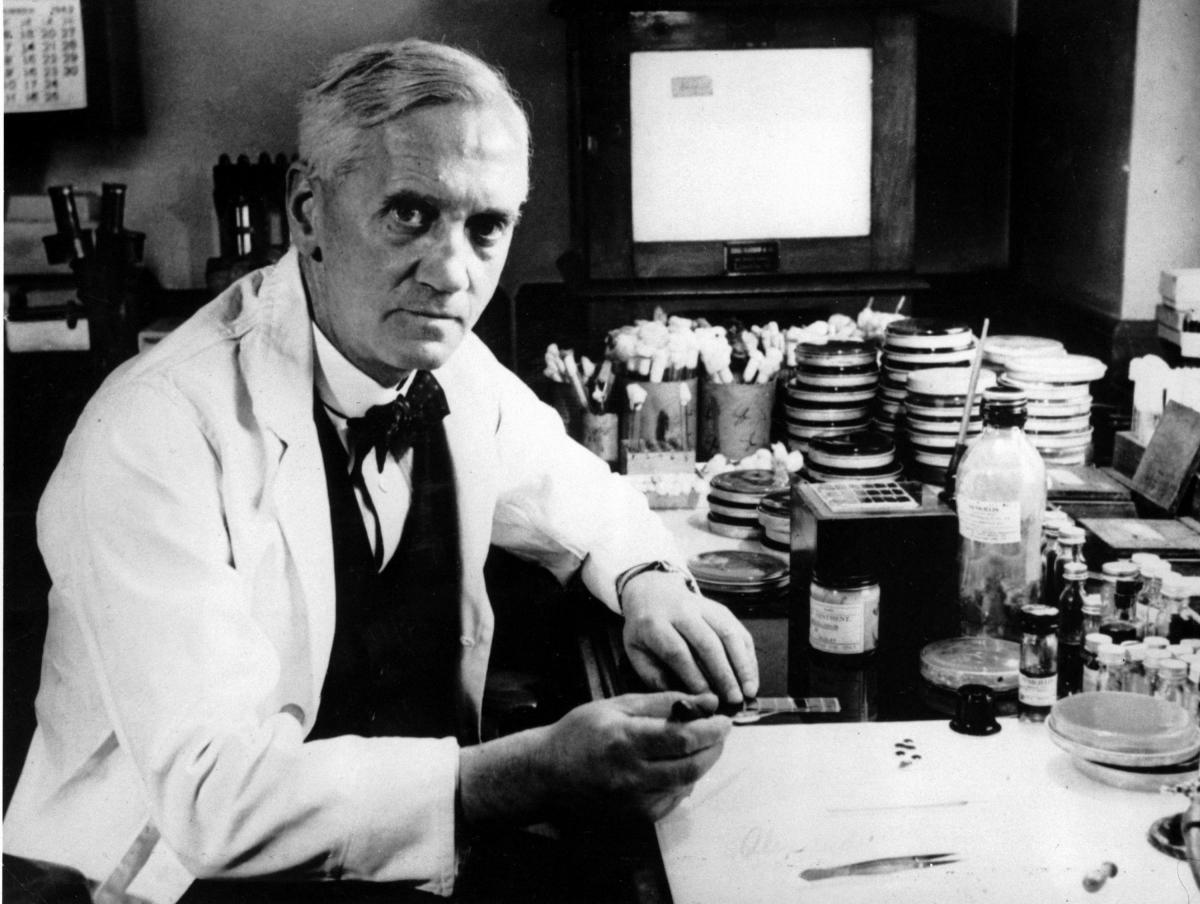This topic takes on average 55 minutes to read.
There are a number of interactive features in this resource:
 Biology
Biology

Although Florey and Chain developed it as a medicine, Fleming and his mouldy plates will always be remembered.
A common mould
Alexander Fleming was looking for ways to destroy bacteria. In 1928, he was growing lots of bacteria known as staphylococci on agar plates. Alexander Fleming could be a bit slapdash - his lab was rather untidy, and he sometimes left the lids off his plates for a long time, letting the air in. Before going on holiday in 1928 Alexander made two mistakes. He didn't put all of his plates in bleach to sterilise them, and he left the lab windows open. When he came back from a holiday, Alexander noticed that lots of his culture plates were mouldy.
A common mould that might have grown happily on a slice of bread had landed on Alexander Fleming's plates – a lucky coincidence which has saved millions of lives.
Just before he put all the plates in the washing up to get clean, Fleming noticed something. Although lots of bacteria were growing on his plates, there was a clear ring in the jelly around some of the spots of mould – no bacteria were growing Something had killed the bacteria that was covering the jelly. Straight away Fleming saw that this might be important. He labelled and saved the plates.
Fleming worked hard on his mould, Penicillium notatum. He squeezed out some 'mould juice' which he called penicillin. But he couldn't get much penicillin from the mould. It wouldn't keep - even in the fridge - and he couldn't prove it would actually kill bacteria and make people better. By 1934 Fleming gave up on penicillin and went on to do different work!
The first antibiotic
In 1938 Howard Florey and Ernst Chain at Oxford University decided to do some work on penicillin. They infected eight mice with bacteria which would normally kill them. Four were given penicillin. The four treated mice stayed healthy – but the other four died.
They went on to treat Albert Alexander, a 43-year-old policeman dying of a blood infection. Florey and Chain gave him penicillin for five days, and Albert was well on the way to health again when the penicillin ran out. Florey and Chain tried everything – they even collected spare penicillin from Albert's urine - but the infection came back, and Albert died. Florey and Chain didn't give up. They collected more penicillin and used it on a 15-year-old boy who had an infection after an operation. He was completely cured.
They showed the value of penicillin in destroying bacteria. The next problem was making enough of it to supply the demand of the soldiers in World War 2. In Britain all the big laboratories and factories were busy with the war effort. But Howard Florey knew lots of people in America, so the scientists took their mould to the United States where some of the big chemical companies helped them make penicillin on a large scale. Penicillin became available to everyone, and the history of infectious diseases changed for ever.